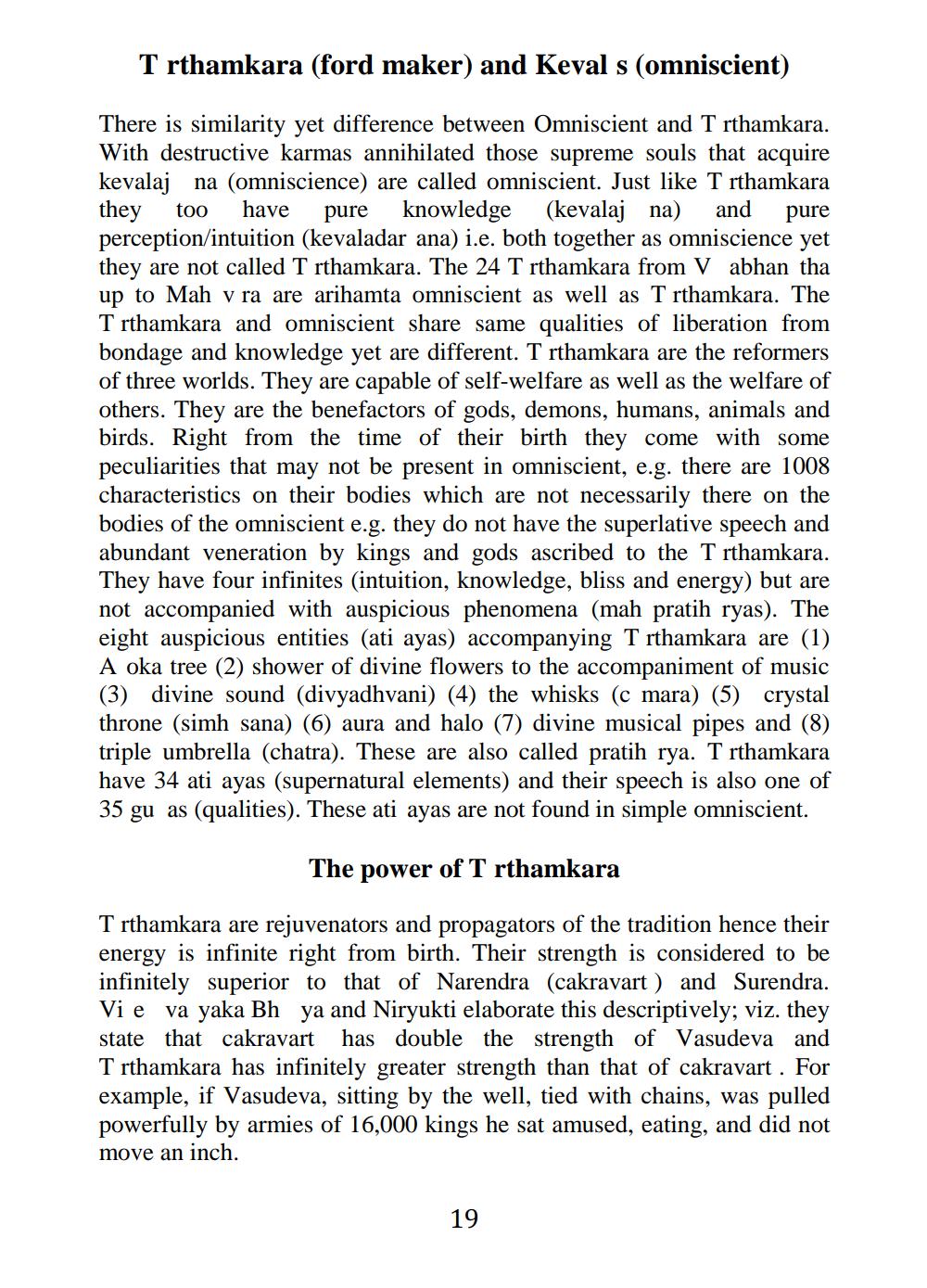________________
T rthamkara (ford maker) and Keval s (omniscient)
There is similarity yet difference between Omniscient and T rthamkara. With destructive karmas annihilated those supreme souls that acquire kevalaj na (omniscience) are called omniscient. Just like T rthamkara they too have pure knowledge (kevalaj na) and pure perception/intuition (kevaladar ana) i.e. both together as omniscience yet they are not called T rthamkara. The 24 T rthamkara from V abh up to Mah v ra are arihamta omniscient as well as T rthamkara. The T rthamkara and omniscient share same qualities of liberation from bondage and knowledge yet are different. T rthamkara are the reformers of three worlds. They are capable of self-welfare as well as the welfare of others. They are the benefactors of gods, demons, humans, animals and birds. Right from the time of their birth they come with some peculiarities that may not be present in omniscient, e.g. there are 1008 characteristics on their bodies which are not necessarily there on the bodies of the omniscient e.g. they do not have the superlative speech and abundant veneration by kings and gods ascribed to the T rthamkara. They have four infinites (intuition, knowledge, bliss and energy) but are not accompanied with auspicious phenomena (mah pratih ryas). The eight auspicious entities (ati ayas) accompanying T rthamkara are (1) A oka tree (2) shower of divine flowers to the accompaniment of music (3) divine sound (divyadhvani) (4) the whisks (c mara) (5) crystal throne (simh sana) (6) aura and halo (7) divine musical pipes and (8) triple umbrella (chatra). These are also called pratih rya. T rthamkara have 34 ati ayas (supernatural elements) and their speech is also one of 35 gu as (qualities). These ati ayas are not found in simple omniscient.
The power of T rthamkara
T rthamkara are rejuvenators and propagators of the tradition hence their energy is infinite right from birth. Their strength is considered to be infinitely superior to that of Narendra (cakravart) and Surendra. Vi e va yaka Bh ya and Niryukti elaborate this descriptively; viz. they state that cakravart has double the strength of Vasudeva and T rthamkara has infinitely greater strength than that of cakravart. For example, if Vasudeva, sitting by the well, tied with chains, was pulled powerfully by armies of 16,000 kings he sat amused, eating, and did not move an inch.
19




